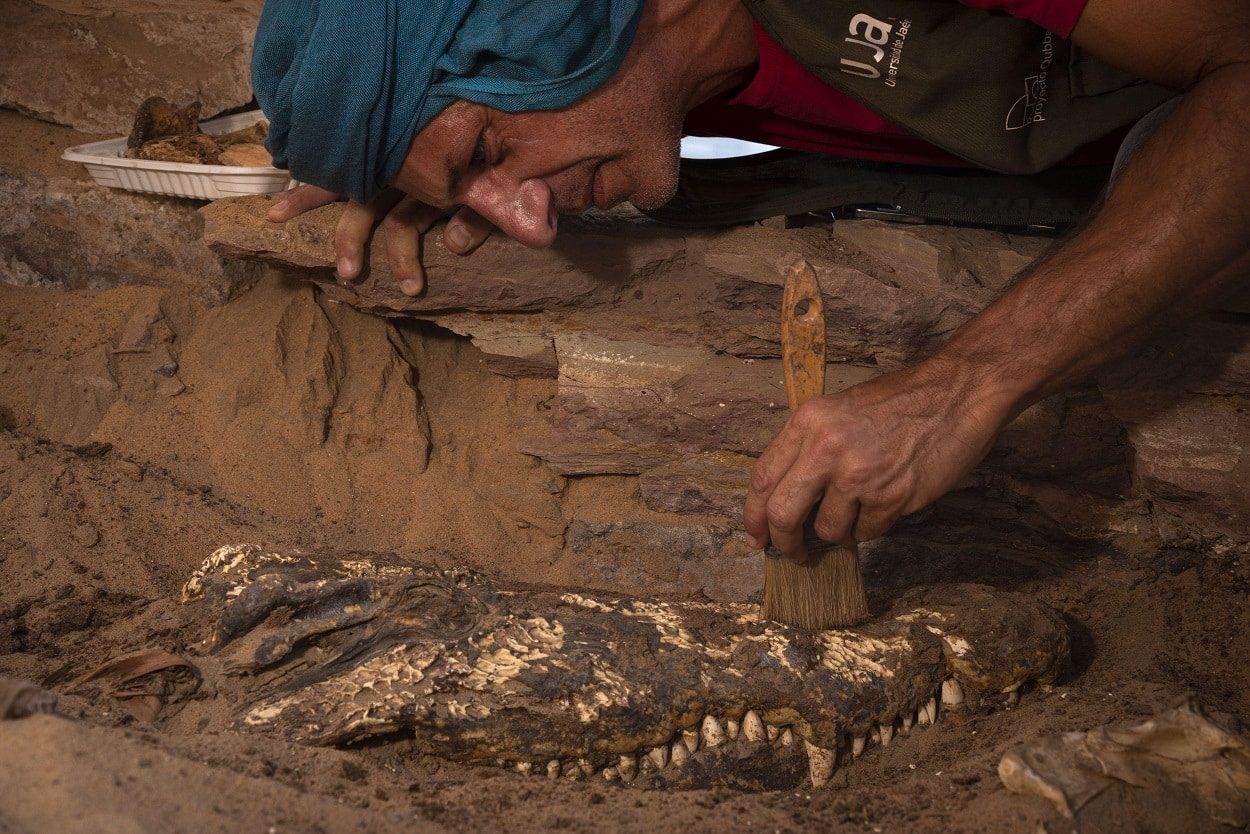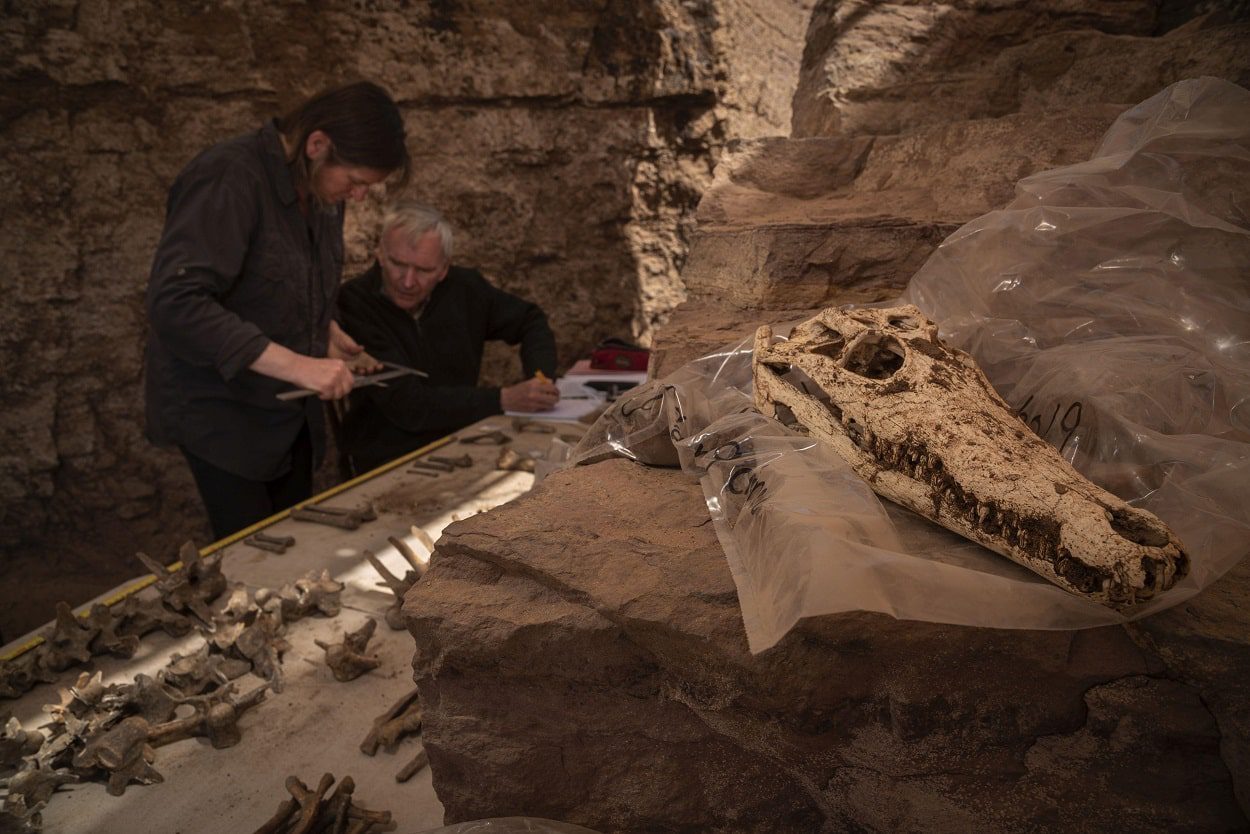Archaeologists excavating at Qubbat al-Hawā in southern Egypt, have uncovered a tomb containing the remains of mummified crocodiles.
Qubbat al-Hawā is located opposite Aswan on the western bank of the Nile, serving as the resting place of nobles and priests mainly from the Old and Middle Kingdoms of Ancient Egypt.
The necropolis was active from the Fourth Dynasty until the Roman Period, where archaeologists have previously uncovered over 100 tombs.
The latest tomb was discovered by archaeologists from the University of Jaén, where they found the remains of five partially complete mummified crocodile skeletons and five mummified crocodile skulls, dating from the pre-Ptolemaic era before 304 BC.

Crocodiles were used during rituals for the Ancient Egyptian god, Sobek, who was associated with the Nile crocodile or the West African crocodile, and is represented either in its form or as a human with a crocodile head.
Sobek was also associated with pharaonic power, fertility, and military prowess, but served additionally as a protective deity with apotropaic qualities, invoked especially for protection against the dangers presented by the Nile.
Bea De Cupere, an archaeozoologist from the Royal Belgian Institute of Natural Sciences (RBINS) said: “More than 20 burial sites with crocodile mummies are known in Egypt, but to find 10 well-preserved crocodile mummies together in an undisturbed tomb is extraordinary. Of most mummies collected by museums in the late 19th and early 20th centuries, often hatchlings, we don’t know exactly where they come from.”

The results of the excavation, now published in the journal PLOS ONE, states that the crocodiles from the tomb measure between 1.8 metres to 3.5 metres in length, belonging to the Nile crocodile and the West African crocodile.
“The crocodiles were first buried elsewhere, possibly in sand pits,” says De Cupere. “This allowed the crocodiles to dry out naturally. Then the remains were unearthed, wrapped and moved to the tomb in Qubbat al-Hawā. Body parts must have been lost during wrapping and transport.”
One of the crocodiles still contained gastroliths, stones in the intestines that help crocodiles stay balanced in the water, suggesting that the crocodile was not cut open to remove the intestines during the mummification process.
https://doi.org/10.1371/journal.pone.0279137
Header Image Credit : Patricia Mora Riudavets





